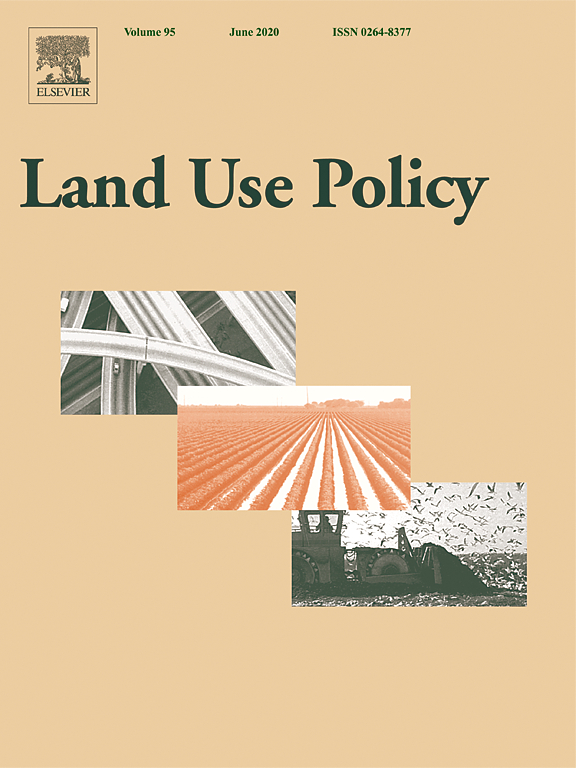Location
Land Use Policy is an international and interdisciplinary journal concerned with the social, economic, political, legal, physical and planning aspects of urban and rural land use. It provides a forum for the exchange of ideas and information from the diverse range of disciplines and interest groups which must be combined to formulate effective land use policies. The journal examines issues in geography, agriculture, forestry, irrigation, environmental conservation, housing, urban development and transport in both developed and developing countries through major refereed articles and shorter viewpoint pieces.
Land Use Policy aims to provide policy guidance to governments and planners and it is also a valuable teaching resource.
ISSN: 0264-8377
Members:
Resources
Displaying 56 - 60 of 279Five scale challenges in Ecuadorian forest and landscape restoration governance
The forest and landscape restoration (FLR) targets set as part of the Bonn Challenge draw attention to the governance arrangements required to translate national FLR targets into local action. To achieve the targets, actors at multiple levels of the governance scale aim to influence relevant processes on the ecological scale. In this article, we focus on the scale challenges relating to the implementation of Ecuador’s restoration targets, by analysing the implementation of the 2014–2017 National Forest Restoration Plan in the montane Chocó Andino and Bosque Seco landscapes.
How and why large scale agricultural land investments do not create long-term employment benefits: A critique of the ‘state’ of labour regulations in Ghana
Support for large scale agricultural investments in Africa has been mainly premised on their employment prospects for local populations. However, despite earlier calls by Tania Li to centre labour in the land grabs debate, labour is generally invisible in both mainstream policy and academic research. This paper, through a governance lens, draws attention to the implications of the global land rush on wage labour.
Assessing the relationship between land tenure issues and land cover changes around the Arabuko Sokoke Forest in Kenya
Land as an essential resource is becoming increasingly scarce due to population growth. In the case of the Kenyan coast, population pressure causes land cover changes in the Arabuko Sokoke Forest, which is an important habitat for endangered species. Forest and bushland have been changed to agricultural land in order to provide livelihood for the rural population who are highly dependent on small-scale farming. Unclear land rights and misbalanced access to land cause uncontrolled expansion and insecure livelihoods.
Transfer of development rights, farmland preservation, and economic growth: a case study of Chongqing’s land quotas trading program
The dilemma between preserving farmland and urbanization has attracted many policymakers’ attention. One sound solution that has been practiced in several developed countries is the “transfer of development rights” (TDR). This study examines a specific TDR program in China—the Chongqing Land Quotas Trading program. We use a synthetic control method on the 2001–2014 statistics of 57 prefectures to quantitatively assess the program’s effect on farmland preservation and economic growth.
Farming systems and Conservation Agriculture: Technology, structures and agency in Malawi
Conservation Agriculture (CA) is advocated as an agricultural innovation that will improve smallholder famer resilience to future climate change. Under the conditions presented by the El Niño event of 2015/16, the implementation of CA was examined in southern Malawi at household, district and national institutional levels. Agricultural system constraints experienced by farming households are identified, and in response the technologies, structures and agency associated with CA are evaluated.



